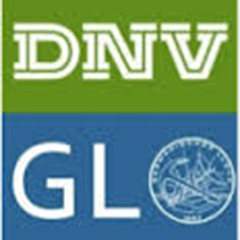- DNV GL position paper presents global cases and best practices for maximizing energy production and revenue, and minimizing operational costs.
- New methods of advanced analytics, inspection and forecasting can improve both technical and financial performance of operating solar plants
Munich, Germany, 23rd June 2016 – Today at Intersolar Europe, DNV GL, the world’s largest resource of independent energy experts and certification, released a new position paper urging solar stakeholders to adopt a rigorous focus on existing asset performance, maintenance and operational data to optimize plant energy production and revenue, and more effectively manage costs.
By the end of 2016, over 320 gigawatts of PV generation are expected to be installed globally, yet the performance of many operating PV systems compared to their potential may not be fully realised.
“As worldwide installed solar capacity grows, the spotlight is shifting to operational factors, applying business intelligence and data analytics to assess, improve and optimize existing asset performance,” said Ray Hudson, DNV GL’s global solar segment leader.
New priorities for an industry coming of age
In DNV GL’s paper “Get Smart: advanced strategies for operating solar assets,” it presents key strategies to help owners and investors maximize solar energy production and revenue, and minimize costs. Case studies from Spain, Chile, the USA, France and the Netherlands demonstrate how new approaches are going beyond historic metrics to deliver actionable insights. These include new methods to inspections, operations and maintenance records, data monitoring and smart analytics, and ongoing improvements to solar forecasting.
“In many markets, solar asset performance has been within the expected range, which has increased lender and investor confidence,” said Hudson. “However, it is becoming increasingly clear that there is a material difference between performing within the expected range and performing at optimum levels.”
What matters most
“Get Smart” incorporates the insights of DNV GL solar experts working on five continents across all major solar market segments. In its capacity as a leading technical advisor, DNV GL has studied a large number of projects, observing varied asset management approaches. This new paper presents successful strategies, case studies and emerging trends useful to solar asset managers and owners.
Preview copies of the new paper will be shared with visitors at DNV GL’s booth B3.202 at Intersolar Europe in Munich Germany. An expert session in the booth is also planned for Thursday, June 23 at 14:00.
You can download the full report here: https://www.dnvgl.com/energy/publications/download/strategies-operating-solar-assets.html
About DNV GL
Driven by its purpose of safeguarding life, property and the environment, DNV GL enables organisations to advance the safety and sustainability of their business. DNV GL provides classification and technical assurance along with software and independent expert advisory services to the maritime, oil & gas and energy industries. It also provides certification services to customers across a wide range of industries. DNV GL, whose origins go back to 1864, operates globally in more than 100 countries with its 16,000 professionals dedicated to helping their customers make the world safer, smarter and greener.
In the Energy industry
In DNV GL we unite the strengths of DNV, KEMA, Garrad Hassan, and GL Renewables Certification. DNV GL’s 2,500 energy experts support customers around the globe in delivering a safe, reliable, efficient, and sustainable energy supply. We deliver world-renowned testing, certification and advisory services to the energy value chain including renewables and energy efficiency. Our expertise spans onshore and offshore wind power, solar, conventional generation, transmission and distribution, smart grids, and sustainable energy use, as well as energy markets and regulations. Our testing, certification and advisory services are delivered independent from each other. Learn more at www.dnvgl.com/energy.


























